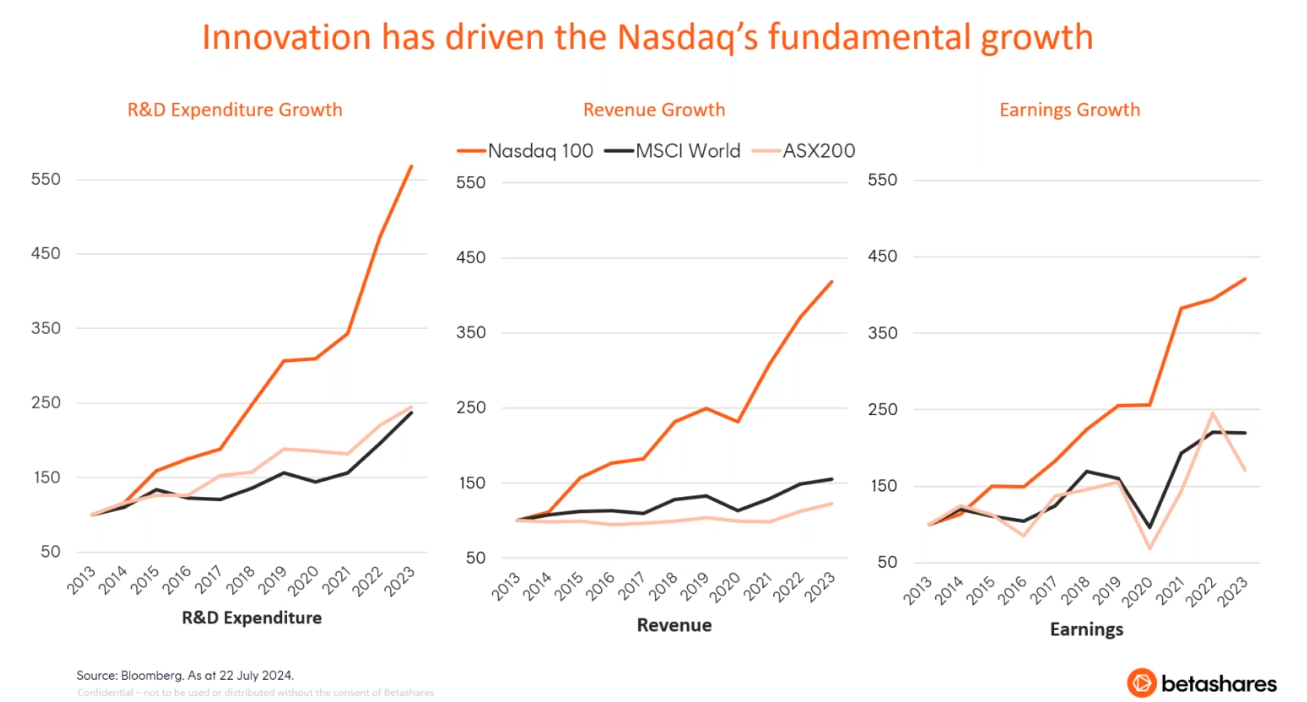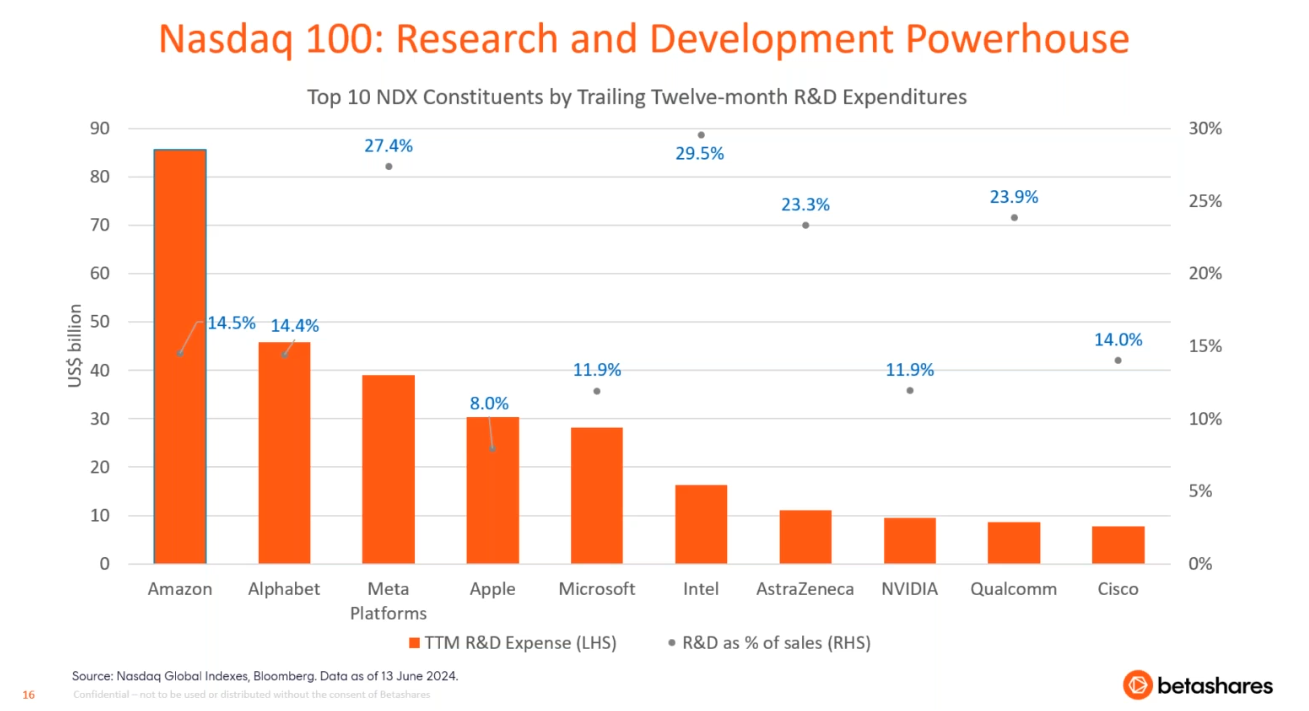The surprising metric that tips future company success
Every day, there’s another headline about big US tech, usually focusing on pricing and valuations. Are the Magnificent Seven overvalued? Has Nvidia hit its peak? Hugh Lam, an Investment Strategist at Betashares, believes investors wondering if today’s heroes can live up to their potential should look at one metric: Research and development (R&D) spending.
In a webinar on Wednesday, Lam shared his insights into why this is important and explored alternative AI winners.
Why R&D matters
Lam strongly believes in innovation as a means of success, particularly in the tech space, which is why how much a company spends on its R&D matters.
There’s a strong correlation in the data if you consider R&D spend in the Nasdaq 100 v the MSCI World, or even the ASX 200. Earnings and revenue growth largely matches with R&D expenditure, as per the chart below.

But taking a specific example, Lam points to Microsoft (NASDAQ: MSFT).
If this comes as a surprise, you need to cast your memory back just over 10 years. Microsoft had failed to capitalise on growth in mobile due to its focus on protecting the PC business. Bloomberg is recorded as suggesting that Microsoft wouldn’t survive the ‘innovator’s dilemma’.
Yet here we are today with Microsoft one of the Magnificent Seven. So what changed?
Lam notes that Microsoft had one of the largest R&D expenditure bills from 2011 to 2014 at $40bn. Here’s where things get really interesting.
A majority of that spend was on cloud computing, a technology that was a disruptor to its own local storage. That investment has had a massive payoff for Microsoft. Its cloud computing offering, Azure, grew 29% yoy for the quarter, with 8% of that growth linked to AI.
Microsoft has also looked at ways of further monetising its existing platforms with careful acquisitions. One of these is OpenAI – incidentally, Apple recently announced a partnership to integrate ChatGPT into iOS later this year.
Who is spending on innovation today?
While anything can change, Lam points out that today’s biggest companies are continuing to spend on R&D in a big way, which should bode well for their future.

It’s hardly a surprise that Amazon (NASDAQ: AMZN) spends by far the most on innovation with general broker consensus trending on Buy. It has nearly 50% market share in the US and beyond that, has continued to grow and develop its cloud offering with 32% of the market.
If we turn to that frequently asked question about Nvidia’s (NASDAQ: NVDA) prospects, its R&D expenditure represents 11.9% of its sales – and it’s also worth highlighting the volume spent has grown substantially in recent years. Latest figures of $8.7bn for fiscal 2024 represent growth of around 500%!
Lam also argues that part of Nvidia’s dominance in the chip market relates to its decision to not lock the technology to its own software – in other words, any developer can use Nvidia’s chips and they are viewed as by far the most superior option on the market for now.
Other AI winners – looking across the supply chain
When you consider the AI space, there are a few channels to consider and Lam nominates a few major players for each.
-
Upstream represents hardware and physical infrastructure.
o Nvidia
o TSMC
o Wistron
o SK Hynix -
Core players are those monetising data with AI.
o Amazon
o Microsoft
o Apple -
Downstream represents those who will utilise services offered by core players, such as in robotics and automation or cybersecurity.
o Keyence
o C3.ai
o Ui Path
o Crowdstrike
o Cisco
o Palo Alto
What does this mean for Australian investors?
When looking at R&D spend for the ASX 200 compared to Nasdaq, it paints a compelling picture about where you’ll see the biggest future growth in earnings and revenue – though that’s also linked to how our market is structured. Technology – where typically most R&D spend occurs – is underrepresented in the Australian market.
Lam also suggests complementing Australian investments with investments in innovation could be valuable to ongoing growth in your portfolio, for example, by using ETFs like Betashares Nasdaq 100 ETF (ASX: NDQ) or Betashares Asia Technology Tigers ETF (ASX: ASIA).
But beyond that, it’s a lesson in looking deeper when you invest. Don’t ignore R&D expenditure when you look at the fundamentals because data suggests that could be critical when it comes to picking future leaders.


2 topics
5 stocks mentioned
2 funds mentioned
1 contributor mentioned

